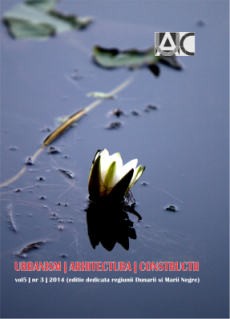DATOURWAY: Transnational Strategy for the Sustainable Territorial Development of the Danube Area with Special Regard to Tourism
DATOURWAY: Transnational Strategy for the Sustainable Territorial Development of the Danube Area with Special Regard to Tourism
Author(s): Elena Stancu, Amelia CazacuSubject(s): Regional Geography
Published by: INCD URBAN-INCERC
Keywords: DATOURWAY project; Danube River; transnational cooperation; territorial development; tourism
Summary/Abstract: The article is a synthesis of the DATOURWAY project which is a part of South Est Europe Program (2009-2012) and represents “an outstanding example of transnational cooperation” between partners from seven countries, from which six countries are touched by the Danube River. The cooperation within the project was committed to the development of tourism along and on the middle and south-eastern section of river Danube, while paying particular attention to the protection and enhancement of the natural and cultural resources linked to this part of River. National Institute for Research and Development in Construction, Urban Planning and Sustainable Spatial Develoment ”URBAN-INCERC”, through “Urbanproiect Branch”, has been one of the Romanian partners in the DATOURWAY project, together with The National Institute for Research and Development in Tourism and the Ministry of Regional Development and Tourism. “URBANPROIECT” has mainly contributed to the National Analysis and Strategy concerning Romanian territory and two Pilot-Projects: PiP3 – “Vidin-Calafat” (Romania and Bulgaria) regarding city tourism and rural neighborhood, and PiP4 – “Deltas” (Romania-Italy) regarding eco-friendly tourism development of river Danube and Po deltas. The DATOURWAY project has been a “contribution to sustainable territorial development and has reflected a common strategic interest by setting a common future approach in the field of tourist development, focusing mainly on the rural areas, by elaborating a set of mutually agreed tourist strategies and implementing different pilot projects tailored to special areas”.
Journal: Urbanism. Arhitectură. Construcţii
- Issue Year: 5/2014
- Issue No: 3
- Page Range: 31-40
- Page Count: 10
- Language: English

